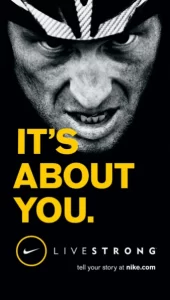Marketing Assignment
Nike’s origins trace to 1962, when Phil Knight toured the Onitsuka (now Asics) factory in Japan. Impressed by the speed and quality with which it produced shoes, he made a deal to sell the Onitsuka Tiger, the company’s signature shoe, in the United States. After showing the sneakers to Bowerman, the duo formed Blue Ribbon Sports in 1964. Knight largely focused on the business side of the company, while Bill Bowerman was involved in shoe design. In 1967 Bowerman created the popular Tiger Cortez, a modified version of the Onitsuka Tiger. In 1971 Blue Ribbon Sports split from Onitsuka and changed its name to Nike, after the Greek goddess of Victory. Its swoosh logo was also introduced that year.
Today, Nike has one of the most impressive marketing departments in the world, which manages to stage expertly timed interventions into the overlapping worlds of sport, politics, and pop culture. “Just do it” the slogan that brings in an impressive 51 billion a year in revenue, and the iconic mantra they’ve stuck with over the years is one of my favorite company sayings of all time; a big part of the reason I’ve been a long-time customer. Since a kid I always wondered to myself what does “just do it” mean? Just do what?
From the quality of products to some of the marketing campaigns I’ve seen Nike invest in, they’ve always had style and appeal. My first vivid memory of one of these ads having me in a mental chokehold takes me back to middle school days when Nike elite socks were a thing. A simple swoosh on the side, and mysterious bubbles running down the back of it, I was convinced that these socks could somehow make me play basketball better. My grandmother didn’t seem so convinced nor could she understand why these socks were $15 per pair, and why every 12-year-old boy needed to have a collection of them. I mean just the name alone sounded like something you didn’t want to miss out on. “Elite”, it made me feel as if I really was an elite and for some reason, this signified social status in 7th grade for me. How cool you were solely depended on how much Nike apparel you could fit into your outfits at the time.
Let’s talk about some of Nike’s marketing tactics using the 2000 Lance Armstrong campaign as an example of why this marketing team does outstanding work and always seems ahead of the curve. “It’s about you”, and “Livestrong” were two of the catchiest sayings behind the genius of the Lance Armstrong campaign. In the visual representation below, you can see Nike makes a bold statement portraying the heroics of Armstrong’s “strong lungs” by giving an elephant CPR. In my young eyes, this very portrayal practically immortalized the man regardless of his reputation with steroids and the doping scandal. This was one of many symbolic Nike ads I grew up watching on TV, and with thousands of them out there representing the prowess of “just doing it”, it’s hard not to wonder what all of the hype is for.
“Before being at the center of the biggest doping scandal in cycling history, Lance Armstrong was a sports icon recovering from cancer to win the Tour de France Road race seven consecutive times (1999-2005). When this Nike television commercial aired in 2000, Armstrong was revered; an athlete of such seeming strength and endurance that he could breathe new life into a dying elephant. Though the animal survives in the ad, in real life, Armstrong’s reputation would not. He was eventually stripped of his titles and publicly disgraced for cheating.” (Vintage Broadcasting System) Lance Armstrong commercial for Nike (2000) – YouTube

Nike manufactures many different products for many different needs. When you think of the brand, you may think of sneakers, socks, clothing, even school supplies such as backpacks. Over the years, I probably had my grandparents spend thousands on products when back-to-school shopping with them, and items for sports events like thermals and undershirts. I genuinely believe why it could be so easy to come out of pocket for a product entirely has to do with overall quality and how the merchandise is advertised. Influence and popular demand are two more huge factors, and I believe the tactics used in these campaigns; make you believe you can do anything.